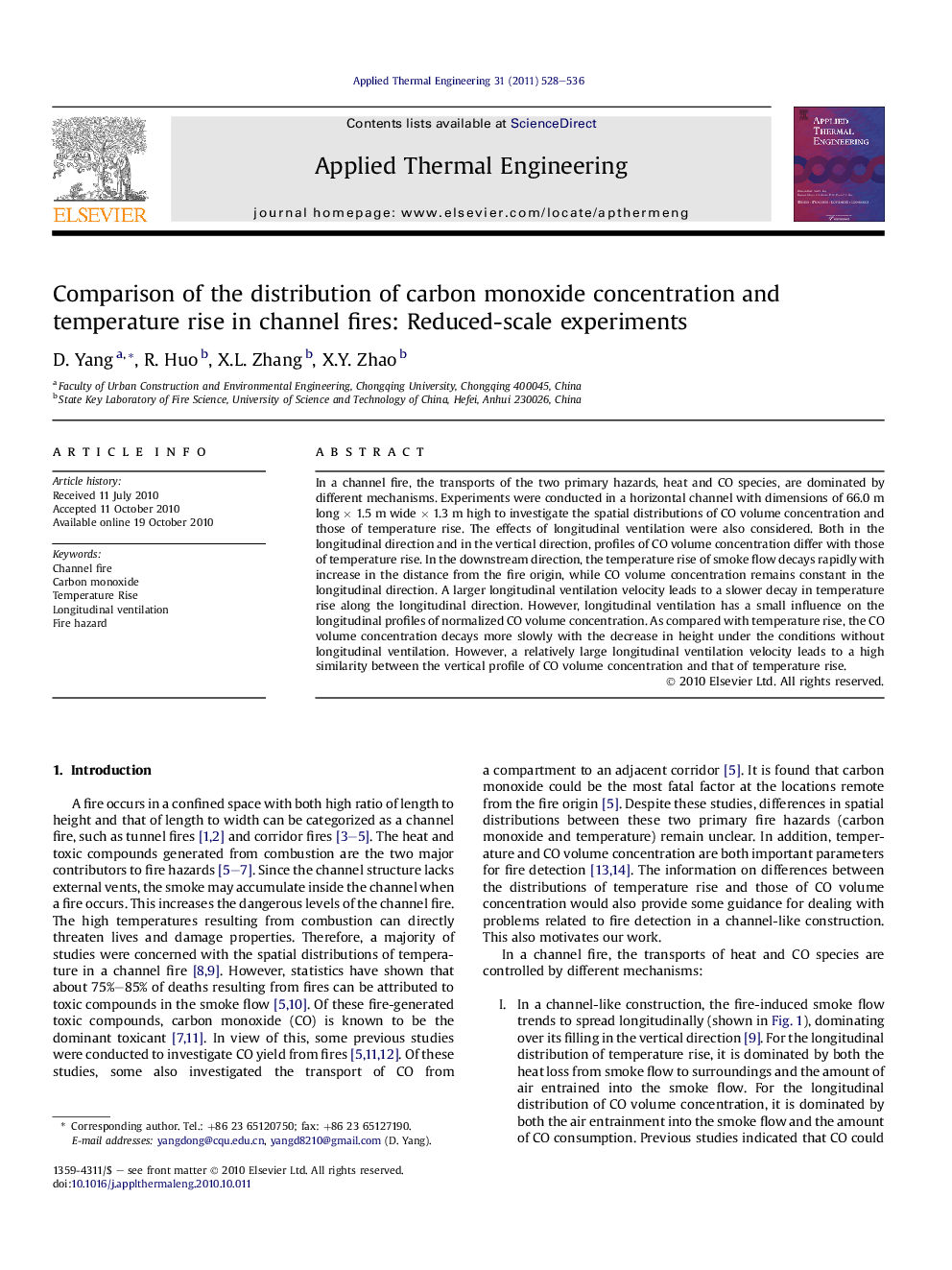| کد مقاله | کد نشریه | سال انتشار | مقاله انگلیسی | نسخه تمام متن |
|---|---|---|---|---|
| 647889 | 884604 | 2011 | 9 صفحه PDF | دانلود رایگان |

In a channel fire, the transports of the two primary hazards, heat and CO species, are dominated by different mechanisms. Experiments were conducted in a horizontal channel with dimensions of 66.0 m long × 1.5 m wide × 1.3 m high to investigate the spatial distributions of CO volume concentration and those of temperature rise. The effects of longitudinal ventilation were also considered. Both in the longitudinal direction and in the vertical direction, profiles of CO volume concentration differ with those of temperature rise. In the downstream direction, the temperature rise of smoke flow decays rapidly with increase in the distance from the fire origin, while CO volume concentration remains constant in the longitudinal direction. A larger longitudinal ventilation velocity leads to a slower decay in temperature rise along the longitudinal direction. However, longitudinal ventilation has a small influence on the longitudinal profiles of normalized CO volume concentration. As compared with temperature rise, the CO volume concentration decays more slowly with the decrease in height under the conditions without longitudinal ventilation. However, a relatively large longitudinal ventilation velocity leads to a high similarity between the vertical profile of CO volume concentration and that of temperature rise.
Research highlights
► The fire-generated heat and carbon monoxide are the two primary contributors to channel fire hazards.
► Significant differences could be found between the distribution of carbon monoxide and that of temperature rise in a channel fire.
► In the conditions without longitudinal ventilation, carbon monoxide concentration decays slower than temperature rise with the increase in longitudinal distance or with the decrease in height.
► longitudinal ventilation reduces the differences between the distribution of carbon monoxide and that of temperature rise, both in the longitudinal direction and in the vertical direction.
Journal: Applied Thermal Engineering - Volume 31, Issue 4, March 2011, Pages 528–536